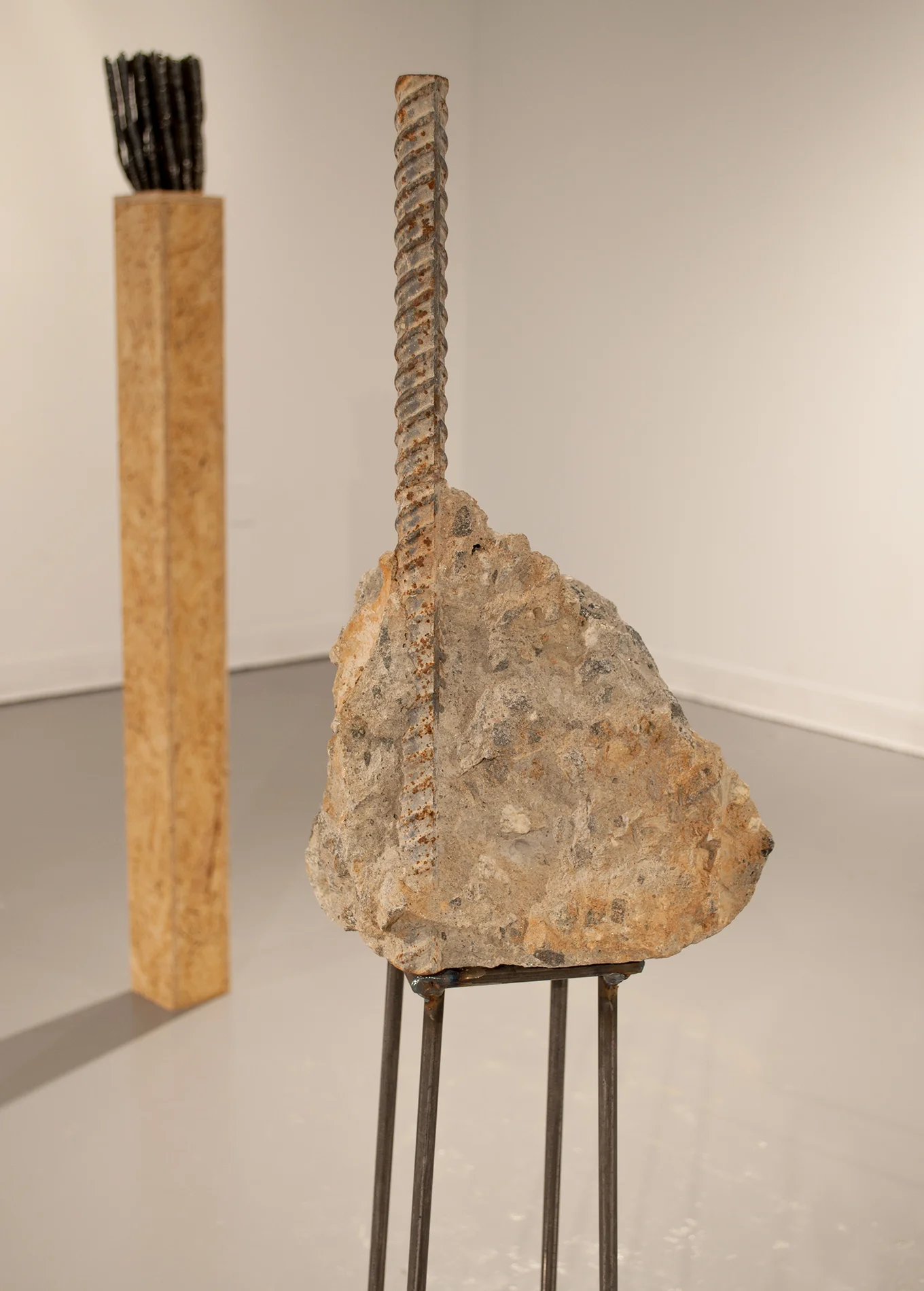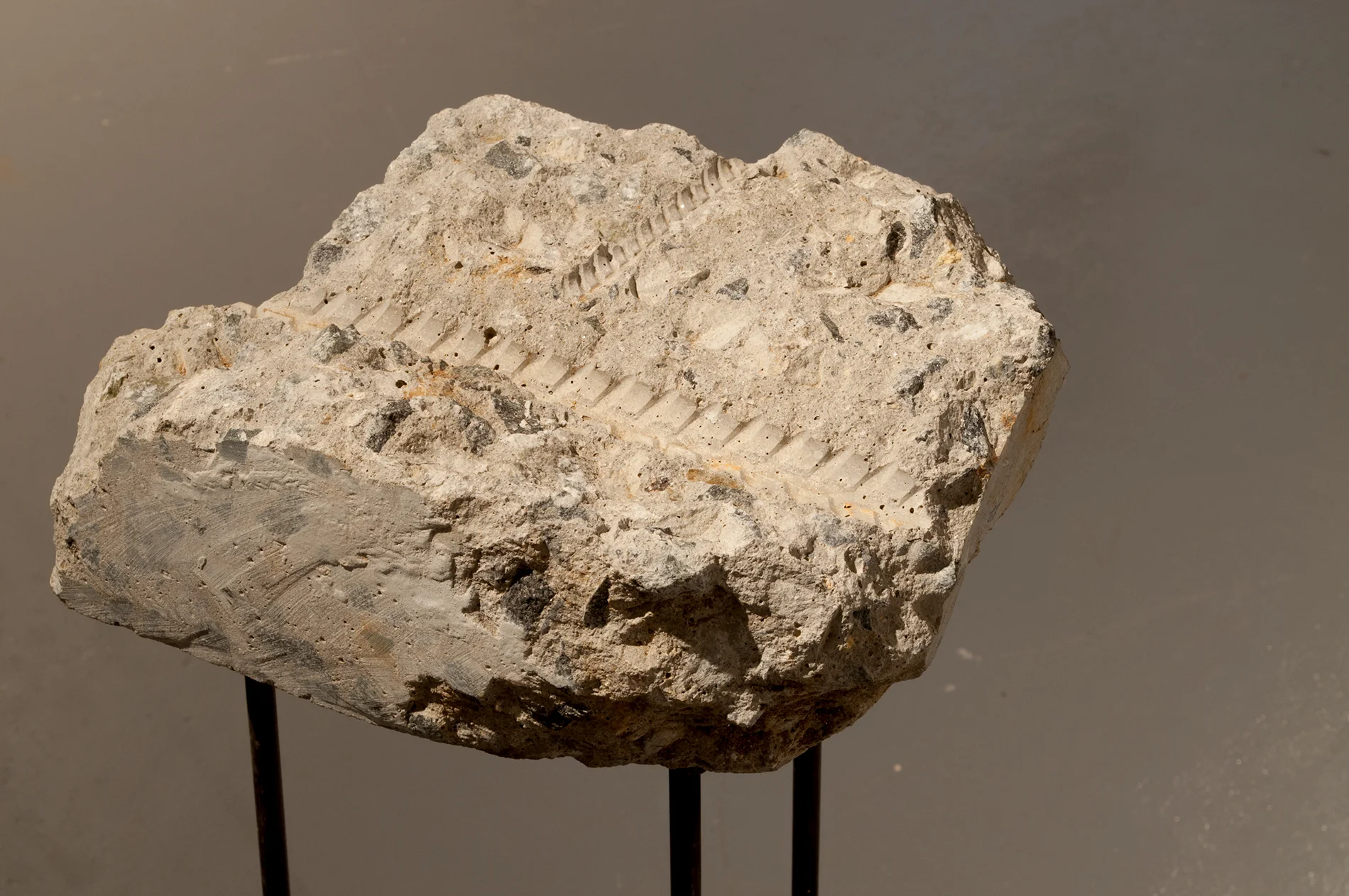The word “virtual” implies a kind of mediation through a computer or network. In the context of physics, the virtual is also a type of particle that has not been physically proven, but is known to exist through evidence of interaction with other particles. In this way, a fossil can be described as a virtual image—a substrate records, only through implication, the prior existence of something else.
Each piece of concrete was found with pieces of or impressions of rebar and other construction material, creating a fossil record of a once existent structure. The pieces are displayed playfully on stilt-like stands and custom built plinths of OSB, a cheap wood construction material. Steel stalagmite-like objects made with a MIG welder engage in conversation with the found concrete and steel. Around the room, images taken from Google Earth are pieced together into large prints. Geometric shapes cover the undulating mountains of Southern Appalachia. Phone lines cut straight swaths across undulating hills, christmas tree farms carve out perfect gridded squares of land, and housing developments clear cut sharp rectangles deep in hollers and on hilltops. Together, these decontextualized objects and images become material evidence of a cultural logic of extraction, referencing their past while uncertainly pointing to the future.













